As a San Diego local, I head south of the border to Mexico frequently. It’s one of my favorite North American destinations. But first-timers have questions! So I polled seasoned Mexico travelers and asked them to share their most useful Mexico travel tips.
Do you have questions about safety? Transport? Money? Read on for the best of the best Mexico travel tips here.
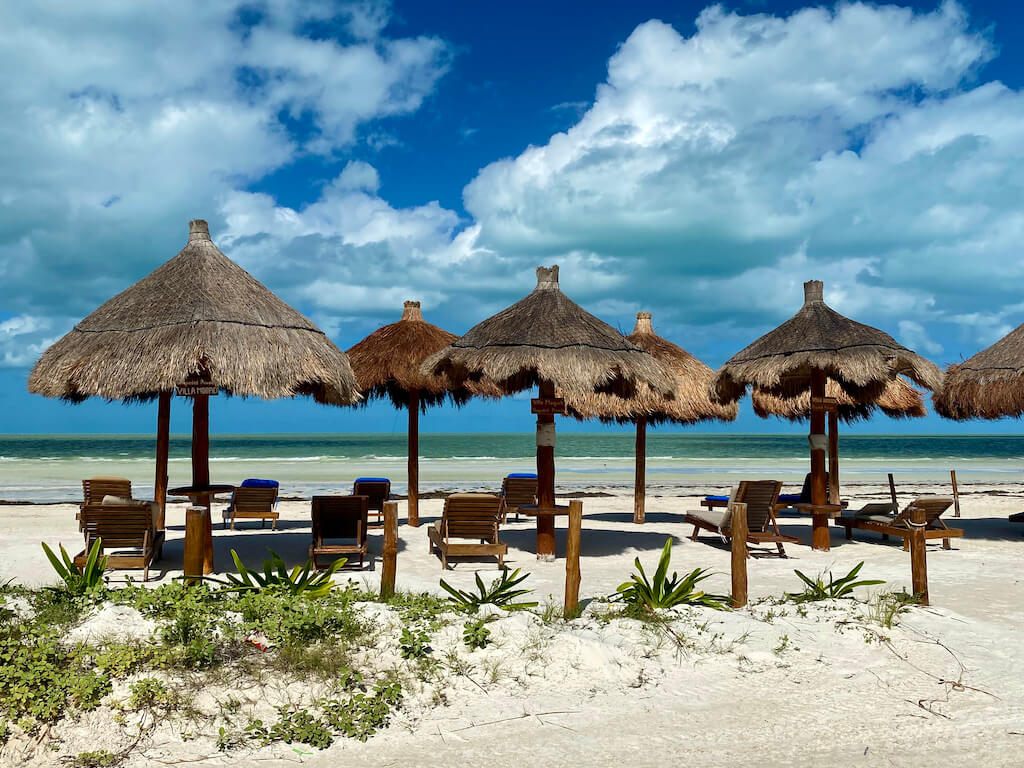
Mexico Travel Tips
1. Assess Your Risk
There are so many reasons to visit Mexico! From culture and architecture to idyllic beaches and delicious, food, the options are endless.
Research the destinations you plan to visit.
Check the US State Department’s travel advisory for Mexico.
While the advisory is written with an abundance of caution, it gives an idea of the latest conditions in each region.
For balance, I also like to review the UK’s travel advice for Mexico as well as Australia’s.
The US State Department uses a four-tiered system to identify risk level for every country in the world.
Mexico has a Level 2 advisory, meaning “exercise increased caution.” It shares its Level 2 status with 58 other countries, including Italy, the UK, China, and France.
Look up the Mexican states you intend to visit. It’s important to be aware which states have a Level 4 “Do not travel” advisory.
Even if a state has a no-go warning, though, specific areas may still be considered safe, like the beautiful city of Morelia in Michoacán.
Keep in mind that Mexico is a large, diverse country. Most popular tourist areas like the Yucatan’s Riviera Maya are still considered low-risk.
I’ve visited Mexico about 15 times, often traveling solo, and have never had an issue.
By doing your research, you should have no hesitation in visiting this incredible country.
Ingrid | Second-Half Travels
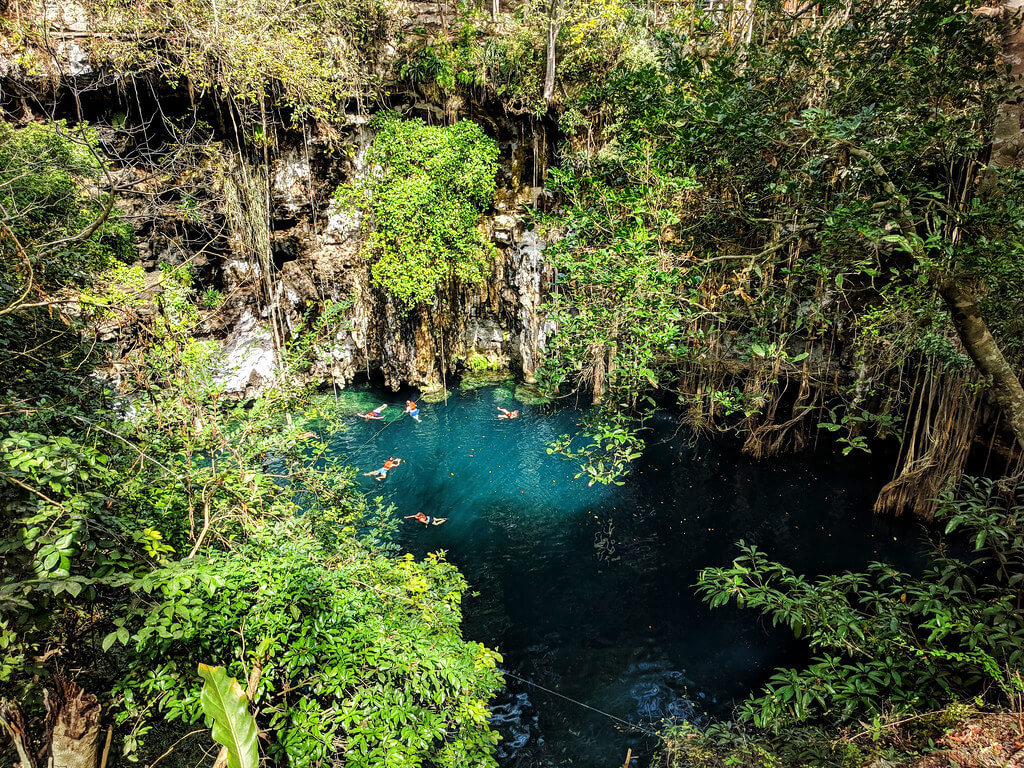
2. Go with the Flow
Travel planning is important but so is relaxing!
And sometimes that means that things happen on a different schedule than you anticipated.
Or maybe you’re visiting a boutique that closes for a mid-day siesta. Embrace it. Resist the urge to plan all the magic moments out of your trip.
During my girls’ day out at Rancho la Puerta in Tecate, we enjoyed the best of both worlds…a full day’s schedule that also allowed lots of time for swimming, meditating, and rest.
When we went wine tasting in Valle de Guadalupe, we let our appetite for tacos and interesting wines dictate our schedule, with siestas at our lovely hotel.
Wherever you are in Mexico, you’re likely to feel a warm welcome and relaxed vibe from locals.
So sip a margarita. Sigh over a sunset. Mexico awaits.
Chris | Explore Now or Never

3. Eat the Street Tacos
One of the great things about Mexico is the food!
Unfortunately, many people have the false impression that eating from street vendors will make you sick so they miss out on some of the best food in the country.
While it may seem safer to eat in a more familiar tourist restaurant, that is rarely the case.
In fact, after many months traveling through Mexico the only time I suffered food poisoning was at a fancy beach resort.
Also, to enjoy a delicious, authentic meal that will blow your mind and your tastebuds, but not your wallet, street food is definitely the way to go.
Still unsure? Here are some tried and true tips to help avoid Montezuma’s Revenge when eating street food.
- Choose street food stands with a line-up of locals, especially if there are women and children eating there.
Locals eat most of their meals at street stands so if someone gets sick, word will spread fast and business will be lost. - Look for vendors with good hygiene practices like having a sink or washbasin handy or using rubber gloves.
- Opt for cooked food over raw. People most often get sick from eating raw vegetables that were not properly washed.
An exception to this is ceviche because using lime juice kills off a ton of bacteria and seafood is usually very fresh on the coast. - Try to eat during local meal times as the food will be freshest then.
- If you tend to have a sensitive stomach, stay away from the really spicy stuff and consider carrying activated charcoal or something like Imodium.
Sarah | Live Dream Discover
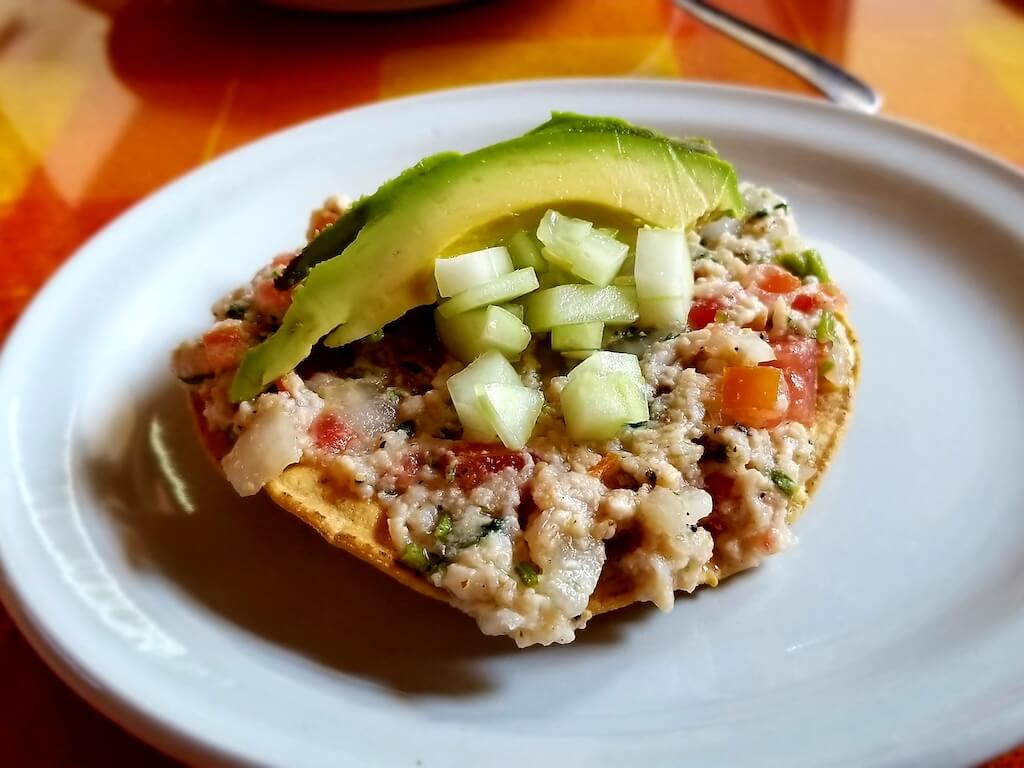
Read more on Mexico travel:
• Travel Guide to Isla Holbox
• Best Places to Visit on the Yucatan Peninsula
• How to Go Wine Tasting in Valle de Guadalupe
• Review of Rancho La Puerta Spa in Baja California
4. Get Travel Insurance
COVID has made most of us rethink our decision to forgo travel insurance.
Plus, there’s lost luggage, canceled flights, an overseas accidents and medical adventures to consider.
Honestly, here’s just no substitute for the peace of mind that travel insurance brings to a trip…and that includes time in Mexico.
The good news is there are great options.
Plus, these days, most travel insurance does cover for COVID related trip delays and interruptions (but not if you decide the risk is too high).
If you’re looking to minimize out-of-pocket-cost for a travel insurance plan, consider getting a credit card with insurance benefits. Just be sure you read the fine print.
For example, premium Chase cards (ie., Chase Sapphire Reserve) cover primary car rental insurance but many other cards do not.
If you’re young and healthy, you might find World Nomads a great option as it’s very inexpensive.
But don’t skip insurance as you’re working out how to best afford travel.
If you’re looking for the company with the best reputation for actually paying out on legitimate claims—that includes substantial coverage—I recommend Allianz, particularly for travelers over age 40.
We recently switched from our Chase card to Allianz ourselves for greater peace of mind by purchasing an annual plan.
In a weird quirk, Allianz frequently offers annual coverage at a lower price than for a trip-specific policy so be sure to quote a potential policy both ways.
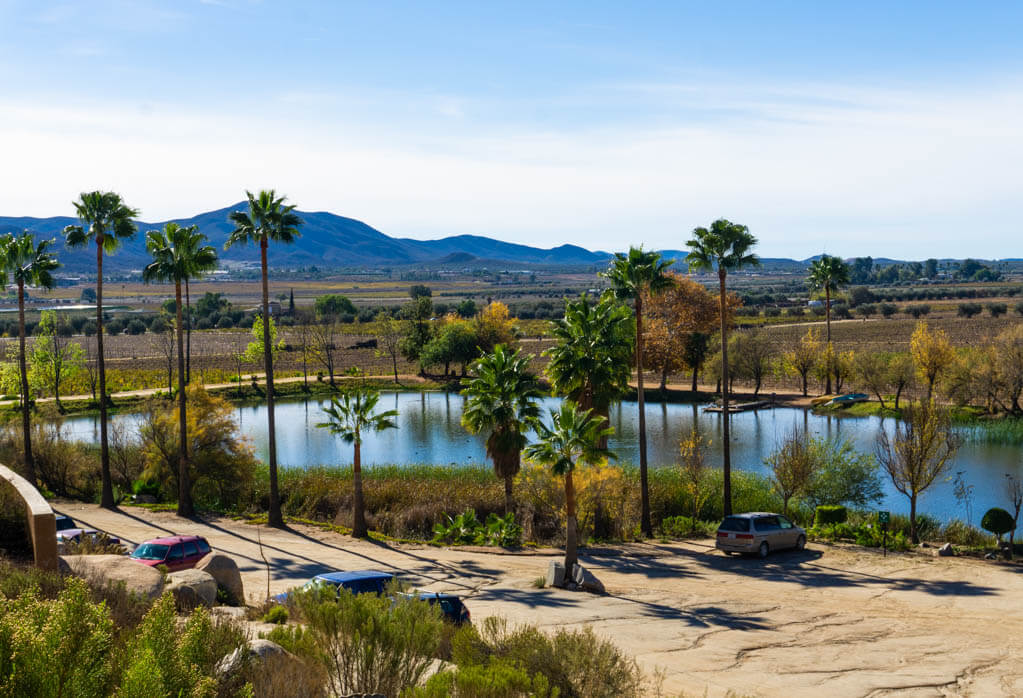
5. Be Street Smart
While traveling in Mexico, it’s important to keep a close eye on your purse and wallet at all times.
I would recommend keeping any valuables such as your passport, expensive jewelry, large amounts of cash, and at least one credit card in the hotel safe.
It’s generally best not to travel with excessive amounts of cash; simply carry what you’ll need for the day’s activities as well as a driver’s license or photo ID.
This way, if your wallet were to get stolen, you’ll still have access to your credit cards, passport, and any funds that are secured in the hotel safe.
When you are out and about, I would recommend wearing crossbody purses with zippered compartments for women.
For men, I would recommend keeping your wallet in your front pocket. (Or check out this list of backpacks.)
An RFID wallet is a particularly great way to protect yourself against electronic theft.
You can get an RFID wallet on Amazon here.
For added security on the go, you might also consider purchasing a PacSafe, which is a portable safe that can be secured to fixtures in your hotel room or even your beach chair.
Check prices for a PacSafe on Amazon here.
Mexico is full of historic, picturesque towns, beautiful beaches, and adventurous activities.
Just be sure to be mindful and aware of your surroundings and you’ll have an amazing time discovering everything that Mexico has to offer.
Allison | Viva La Travelista
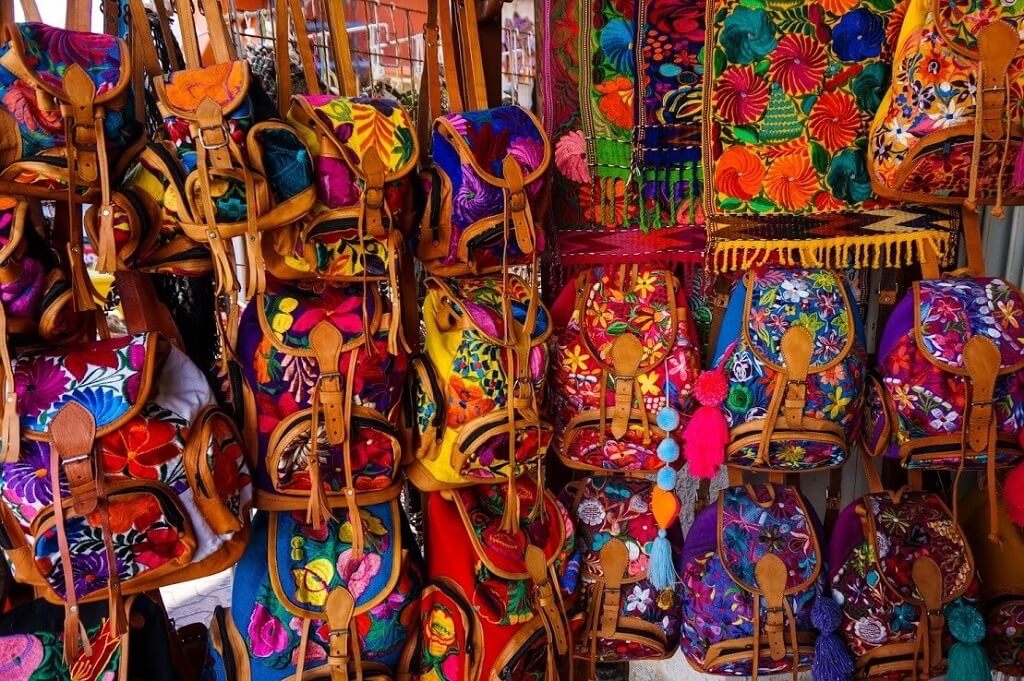
6. Negotiate Taxi Rates
My very favorite tip to give people who are traveling to Mexico for the first time is to always negotiate a taxi rate before you get in a taxi.
It can be common for taxi drivers to mark up the fare if they believe you are a foreigner and don’t know the customary price for a fare.
Once you get in the taxi, you are at the discretion of the driver and what they want to charge you.
To avoid this situation, we recommend always telling the driver where you want to go first, asking the price, and then negotiating on the street.
Once you reach a price you are comfortable with, you can get in and know that you are receiving a fair price.
In places like Mexico City, it is very common and safe to use services such as Uber.
Using Uber is generally safer in Mexico City as you can check out the driver before they arrive and you don’t have to deal with negotiating a fair or paying by cash.
In smaller towns throughout Mexico—such as Tulum, Cancun, Guanajuato City, or Oaxaca City—it really depends on the town and whether or not Uber has arrived/is legal there yet or not.
To be sure, just check the app to see if Uber operates there. If it does, it is generally a better bet to use Uber!
Jessica | Unearth the Voyage
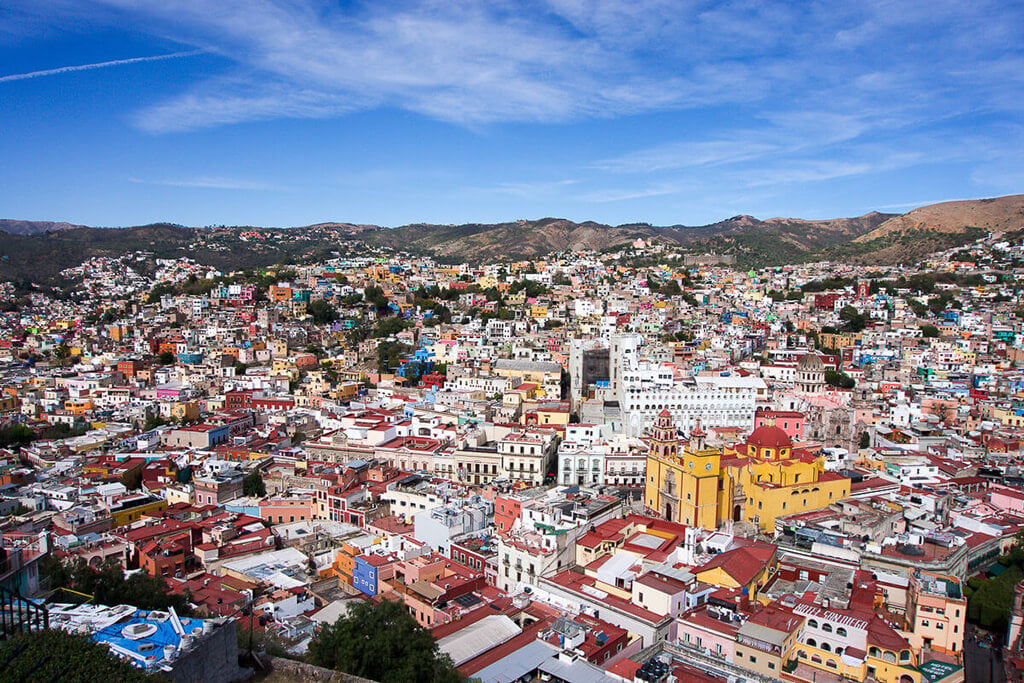
7. Know a Few Spanish Phrases
Your Mexico travels will go more smoothly if you learn some basic Spanish ahead of time.
Now, this doesn’t mean that you have to go out and master the Spanish language before visiting.
On the contrary, all you need to do is learn a handful of common words and phrases relating to transportation, restaurants, and lodging.
This way you’ll be able to ask important questions, such as directions to a specific location, while you’re visiting Mexico.
It will also allow you to briefly interact with locals, which is something worth pursuing.
For beginners, the best way to learn these words and phrases is to use an easy language app such as Duolingo.
I’ve personally used Duolingo in the past and I find it to be an efficient method of learning beginner-level Spanish.
The app is completely free and it will allow you to not only learn important words but to test out your knowledge through interactive lessons.
These lessons are designed so that you will have a greater chance of remembering the words and a better understanding of pronunciation.
By setting aside five to ten minutes every day to learn some basic Spanish, you’ll be able to navigate Mexico with greater efficiency.
Try Babbel, a subscription-based app that focuses on vocabulary you’ll actually use. You can sign up for one month or many months.
Michael | Passport Explored
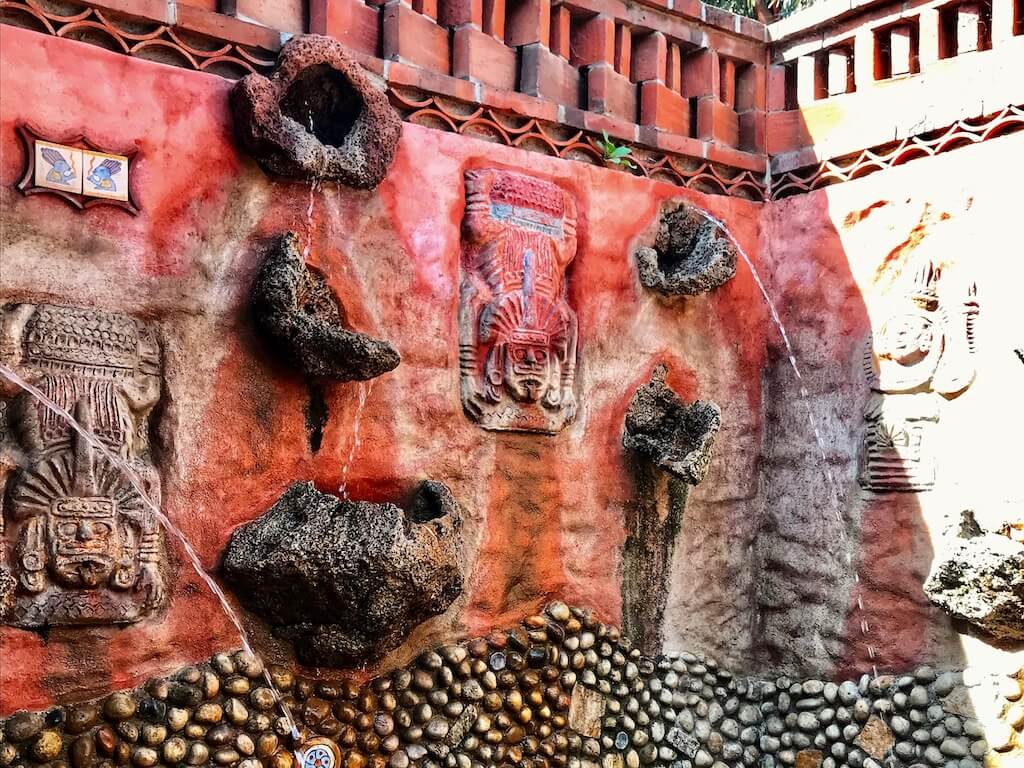
8. Heed the Flags on Beaches
One of the best and easiest ways for visitors to Mexico to stay safe is to pay attention to the beach flag and warning signs.
It’s not just big waves that can pose problems for swimmers.
On beaches everywhere in Mexico—from Cancun to Zicatela—there can be strong and dangerous currents, algae, jellyfish, red tide, sargassum seaweed, lightning or other hidden hazards.
Fortunately, on major public beaches, Mexico follows a sign signal similar to those in other countries, where a double red flag means the beach is closed to public use (stay out of the water).
A red flag means there are hazardous conditions (stay out of the water), a yellow flag means medium hazard (use caution), green means calm waters, and purple means dangerous marine life such as jellyfish.
The purple flag is rarely seen in Mexico so it’s worth asking the lifeguards or checking with your hotel for updates if you’re unsure.
There are also permanent warning signs at beaches where rip currents are always present or strong sea surges.
Between July and December, it’s also possible to see some beaches posted as off-limits due to arribadas.
These are mass sea turtle nestings where 5,000 or more sea turtles arrive to lay their eggs on the beaches of Mexico.
In this case, the beaches are accessible but only with a certified guide.
So, although it’s tempting to go racing into the ocean when you first arrive at the beach in Mexico, it’s prudent to assess the water conditions for safety first.
Michele | A Taste for Travel
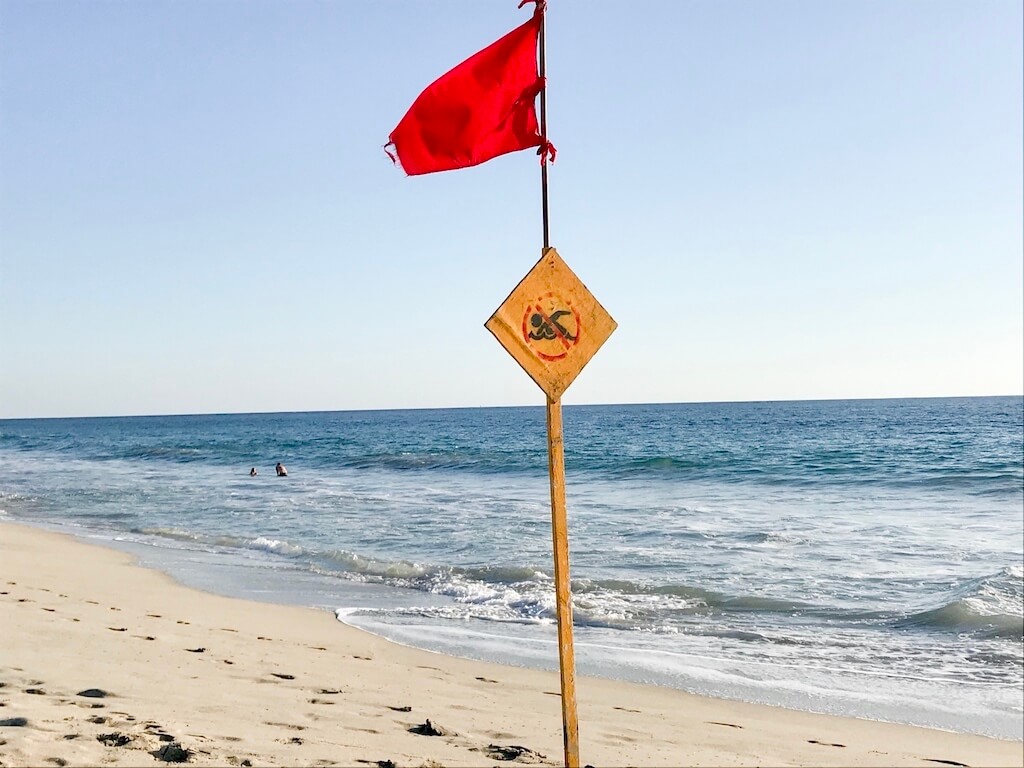
9. Register with Your Embassy
Before you leave for your trip, it’s a good idea to register with your country’s embassy in Mexico to let them know where you’ll be.
If you’re a US citizen, you can use STEP, which stands for Smart Traveler Enrollment Program.
It’s easy to enroll online and is completely free.
You can either register a single trip or create an account, which will allow you to change the details of your travels each time you start a new trip.
For frequent travelers, creating an account is the best option.
If you’re traveling with your family, you can make just one registration and then list your family members as accompanying travelers.
Once you register your trip, you’ll receive email updates about the safety and security situation in Mexico and any new developments you should know about.
Enrolling also makes it easier for the embassy to contact you in the event of an emergency, such as civil unrest or a natural disaster.
Of course, the embassy will always be available to help you whether you have registered or not, but registering makes it easier for them to assist you during a crisis or emergency.
It also gives you peace of mind, since you’ll know that if something happens you’ll receive an alert right away.
So, instead of constantly checking the news, you can relax, soak up the sun, eat delicious Mexican food and have a great time.
Wendy | The Nomadic Vegan

10. Don’t Drink the Water
Mexico is a popular vacation destination that people love to visit. An important thing to know when you travel there is that it’s not a good idea to drink the tap water.
While most may know this, what many people don’t think about is the water involved in the preparation of the food they eat while in Mexico.
In addition to not drinking the water, you should not eat anything rinsed in water that is not cooked or peeled.
Think about it for a moment: If you rinse your apple in tap water to clean it before eating it, how is that any different than slugging back a glass of water?
That side salad on your plate was all rinsed with the same water you know you shouldn’t drink.
I have joked about this as I have never wanted a salad as much as when I travel to Mexico (or any developing country, for that matter). But, it’s true!
Of course, you can take a chance as no one’s stopping you.
But nothing ruins a vacation more than the joys of “Montezuma’s Revenge” or a hospital visit to get antibiotics to put an end to it.
And here’s a last thought: When you brush your teeth, use bottled or filtered water to rinse your mouth and your toothbrush.
It’s all the same idea and you will enjoy your trip more for it.
Or, to avoid looking for sources of safe water, just bring a LifeStraw filtered water bottle so you don’t have to worry!
It removes 99.99 percent of pathogens from any freshwater source on earth.
Click here to grab a LifeStraw water bottle on Amazon.
Sam | My Flying Leap

11. Buy A SIM Card
You might think you need to have all the travel essentials before you travel to Mexico, but there is one thing that we recommend not buying online.
Wait until you arrive in Mexico and buy Telcel, a Mexican SIM card, which is available for purchase everywhere in the airport when you arrive, the grocery stores or cell phone shops.
It’s just a useful tip for traveling to Mexico.
Out of all the Mexican cell providers, Telcel has the most subscribers and widest coverage.
As mentioned, the SIM cards are sold pretty much everywhere, so it’s as easy as walking into a store and ask to buy a new SIM. They’ll help you set it up!
The Telcel is a great alternative to buying a costly data plan from your current cell phone carrier.
You can get plenty of data for less than $20 USD per month.
This is especially great to use for google maps, as we all know getting lost while traveling is a given!
If you are heading out to hit up all the Cancun attractions or beaches in Mexico you’ll want to be connected.
Hannah | Getting Stamped
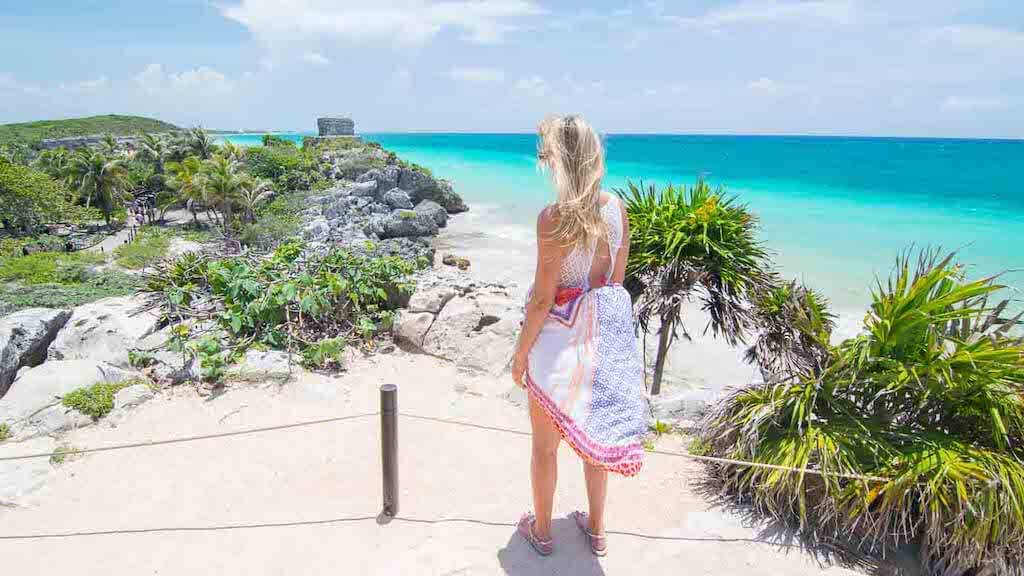
12. Bring Something Warm for the Bus
Having traveled extensively throughout Mexico, one of my best travel tips for Mexico is to pack a sweater, a thick scarf or a light sleeping bag. (Scarves are also super useful when traveling in Morocco!)
If you are planning to travel by bus, be warned: The buses only seem to know one setting for their air conditions: ice age!
How often have I almost frozen to death on those long-distance or overnight bus trips in Mexico, I honestly can’t remember anymore.
Even though the weather outside is mostly pleasantly warm and you wouldn’t think of Mexico as a place where you would need a sweater or long pants, do yourself the favor and be prepared for the bus rides.
Many hotels, hostels, malls, and cinemas are also big fans of ice-cold temperatures, meaning that you should pack something warm for practically any indoor activities.
Pack to wear layer and make use of the onion look – different layers that you can peel off depending on the temperature.
Just choose a lightweight solution to minimize bulk when packing.
You can check prices of scarves on Amazon here. A cashmere sweater or down jacket make great layering options too!
Viktoria | Chronic Wanderlust
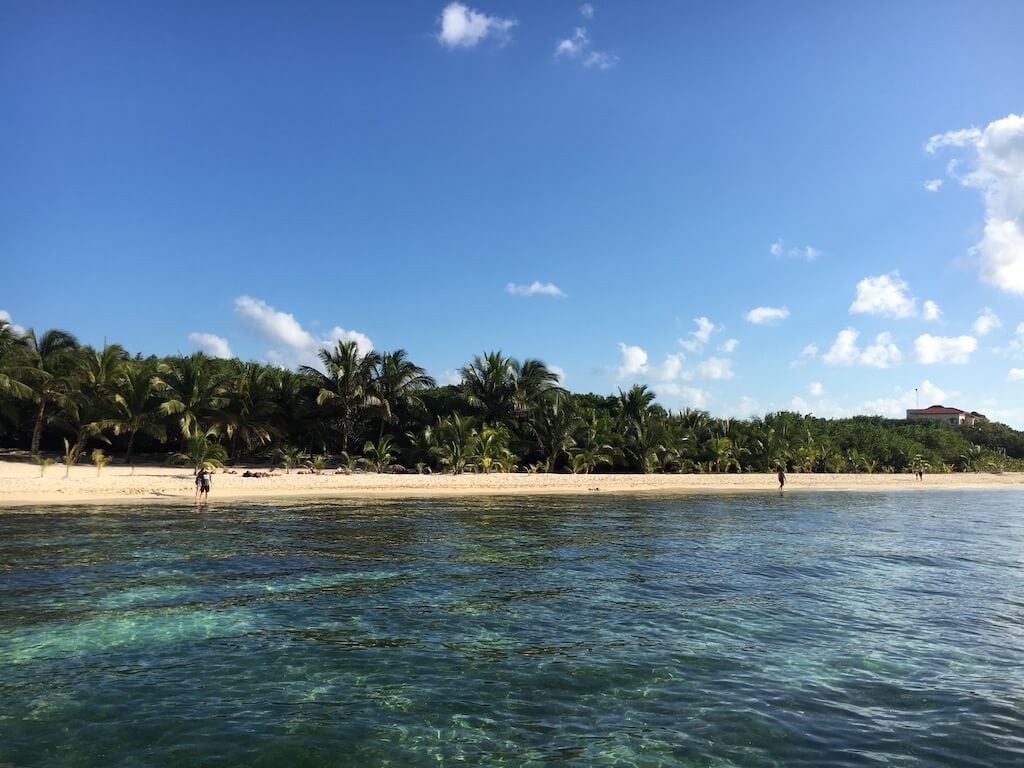
13. Download Google Maps
If you’re going to Mexico, download the Google map for your destination before arriving so you’ll have access to important addresses, names, and directions.
Once downloaded on to your phone or tablet, you’ll be able to access all locations even if you’re not on WiFi or using data.
Before arriving in Mexico with my dogs, I pinned all important locations on a Google map and downloaded the map to my phone.
This included my accommodation, the airport, all nearby hospitals and veterinarians, as well as touristic spots I knew I wanted to visit.
Other points of interest included the closest public transportation stations—metro, bus stop— the American embassy, information booths, restaurants I wanted to try, and local supermarkets.
Be sure to download the map for offline use before you arrive at your destination and while you are connected to the internet. It’s easy.
Just open the Google Maps app on your phone or tablet, sign into Google Maps, and search for the city or town you’re going to.
Then, at the bottom of the page, tap the location name (in the white bar) and select “download.” That’s it!
Candy | Boogie the Pug
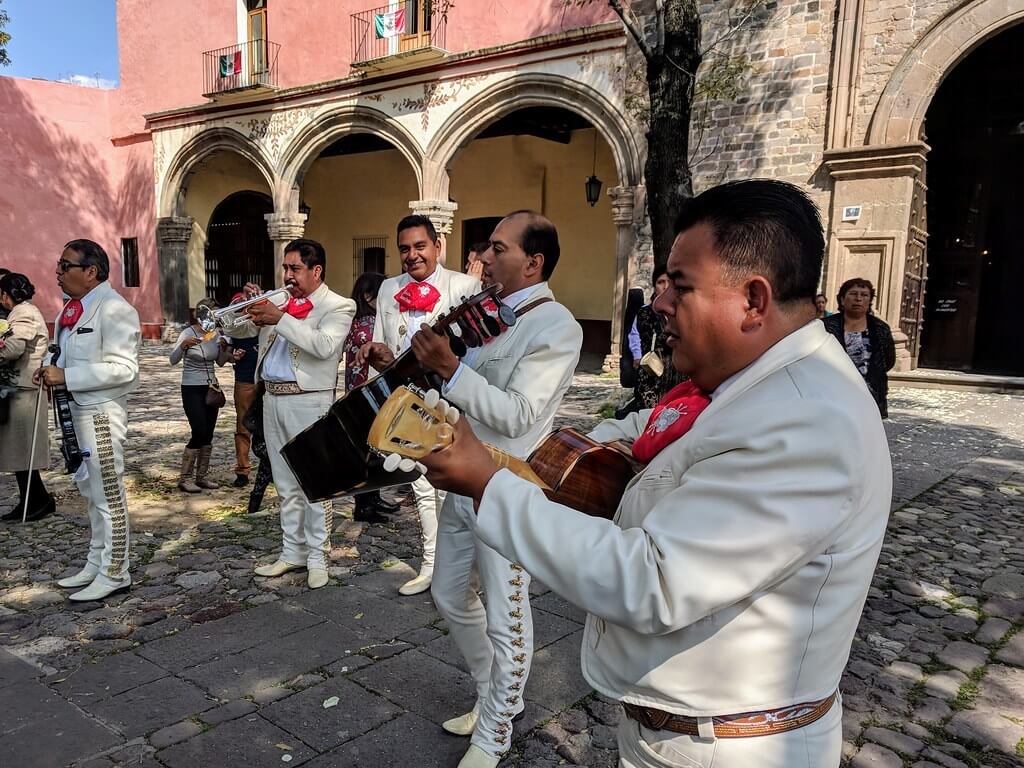
14. Pay in Local Currency
Here’s a key Mexico traveling tip: There are some restaurants that will try to convert your peso bill to USD using an inflated conversion rate…whether you’ve requested it or not!
So as a result, you will pay more.
You can avoid these unnecessary fees by making sure that the bill they provide is in local currency (Mexican Peso) and by saying no if they ask you if you want your bill in USD. Always pay in pesos.
Not every Mexican restaurant uses this practice, of course.
But we did notice some restaurants in Cancun, Playa Del Carmen, and other tourist hot spots in Mexico scam unsuspecting tourists in this way.
Unfortunately, it’s not a practice that is exclusive to Mexico.
Bill discrepancies can range from small change to a large amount. And even if it’s not much, at the end of the day, these small amounts can add up.
And speaking of saving money on your trip, try to pay in cash as much as possible.
Credit cards are subject to foreign transaction fees and also poor conversion rate that can also add up on your trip cost.
Christine | The Travelling Pinoys
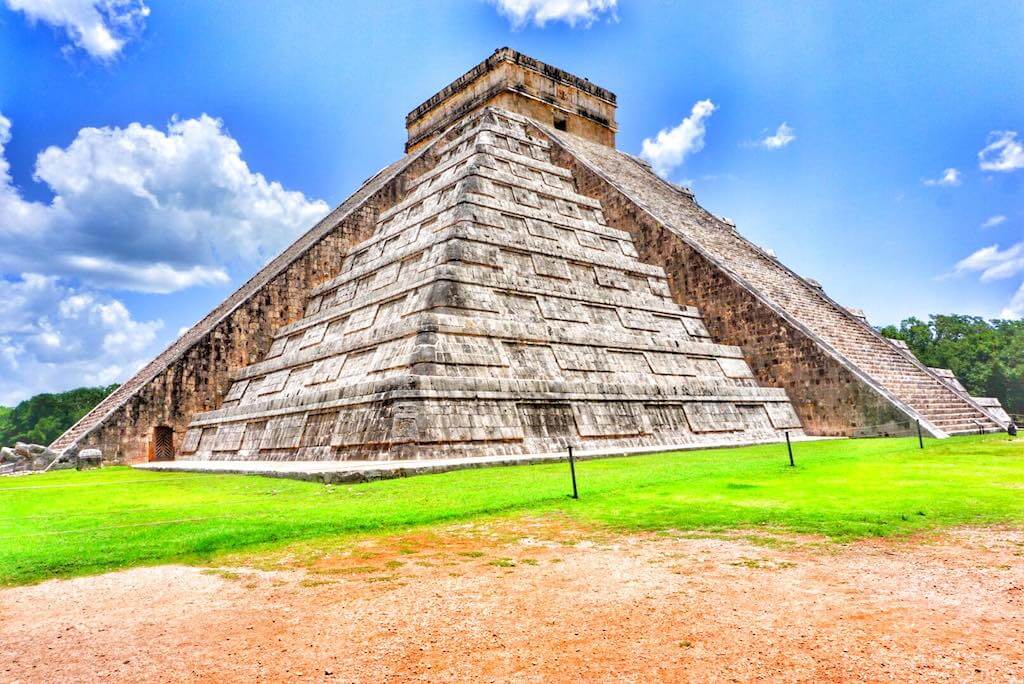
15. Book Bus Journeys Online
Whenever traveling to Mexico, there are some basic tips and advice travelers should follow when it comes to traveling around the country, especially if you’ll be traveling by land.
As you get more acquainted with travel in Mexico, one thing that you’ll quickly come to grips with is that the main bus company Ado is everywhere.
Meaning, the more you travel by bus you’ll likely find it easier and more accommodating to travel with Ado.
Not only that, Ado serves most major bus routes throughout Mexico.
If you’re a first-timer to Mexico, book your bus ticket with Ado on their website to save yourself repeated trips to the station.
This way you get to select your seat and there is no need to speak with anyone, nor print off your ticket.
As long as you can show the ticket on the screen of your mobile device, there is no need to do anything else.
For those who prefer to use credit or debit cards, booking online also saves you the trouble of ticket offices that may not accept your card due to technical difficulties.
Bonus: You’ll avoid showing up at the bus station to find your bus is fully booked.
Daniel | Layer Culture
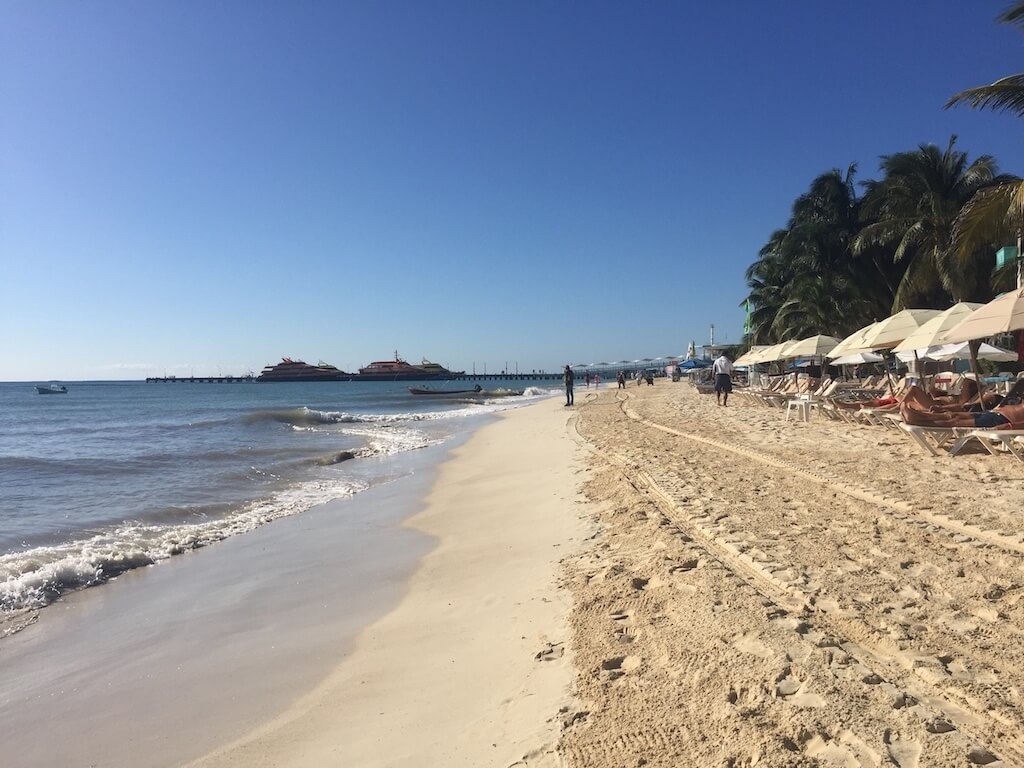
16. Choose sustainable wildlife tours.
There are loads of great opportunities to engage with wildlife in Mexico, particularly if you’re camping along the Baja Peninsula.
But not every tour you find will provide a respectful boundary between you and the wildlife.
It is important to support local businesses and tour guides who make particular effort to protect the animals you encounter.
In Baja, for instance, you can swim with whale sharks and sea lions in a highly protected marine reserve in the waters near La Paz.
Aside from the tour itself, you must pay a fee to enter the protected space before you can swim with the whale sharks and captains.
Tour guides are strict on ensuring you do not touch the gentle creatures.
Additionally, along the Pacific side, you can interact with grey whales. But captains are not permitted to chase after the whales just so you can be close to them.
The whales must approach the boat on their own (and quite often do) in such a way that the boat does not disrupt their natural behaviors.
And there are also plenty of places to release recently hatched turtles as a way of supporting the preservation and continuation of nature as you travel.
Chris & Lindsay | Called to Wander
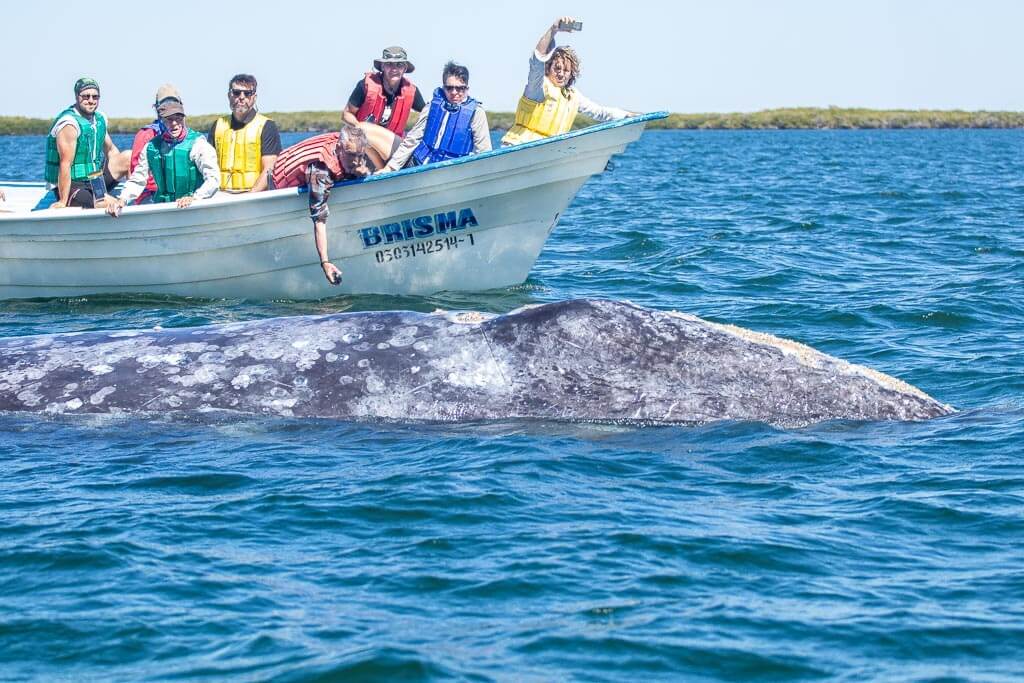
17. Volunteer at an Animal Shelter
Volunteering at a pet shelter might not compare to sunbathing on a Mexican beach but you will personally receive so much love from the shelter’s cats and dogs.
And there is no risk of getting sunburned!
So when you plan your escape to Mexico, consider researching in advance if there is a pet shelter looking for vacationers to volunteer.
Your best bet is to ask your host or hotel concierge for assistance in locating the city or town’s rescue shelter.
They are usually short on funds but full to the rafters so volunteers are welcome.
Among the top tasks for individuals are walking the dogs outside. If there are newborn kittens, the shelter will need them to be bottle-fed.
You can sit down on a chair to feed the kittens.
The milk gushes in the kitten’s little mouth and spills back out. Once you finish, you proceed to feed the next kitten.
Be sure to stick around and snuggle each of the cats who desperately want to be touched and petted.
It is also a huge help for the stray dogs who are not strong enough for long walks simply to be massaged and stroked.
At Isla Holbox, the Refugio Animal Shelter sought volunteers to feed the pets, walk the dogs and brush the animals.
Teresa | Female Solo Trek
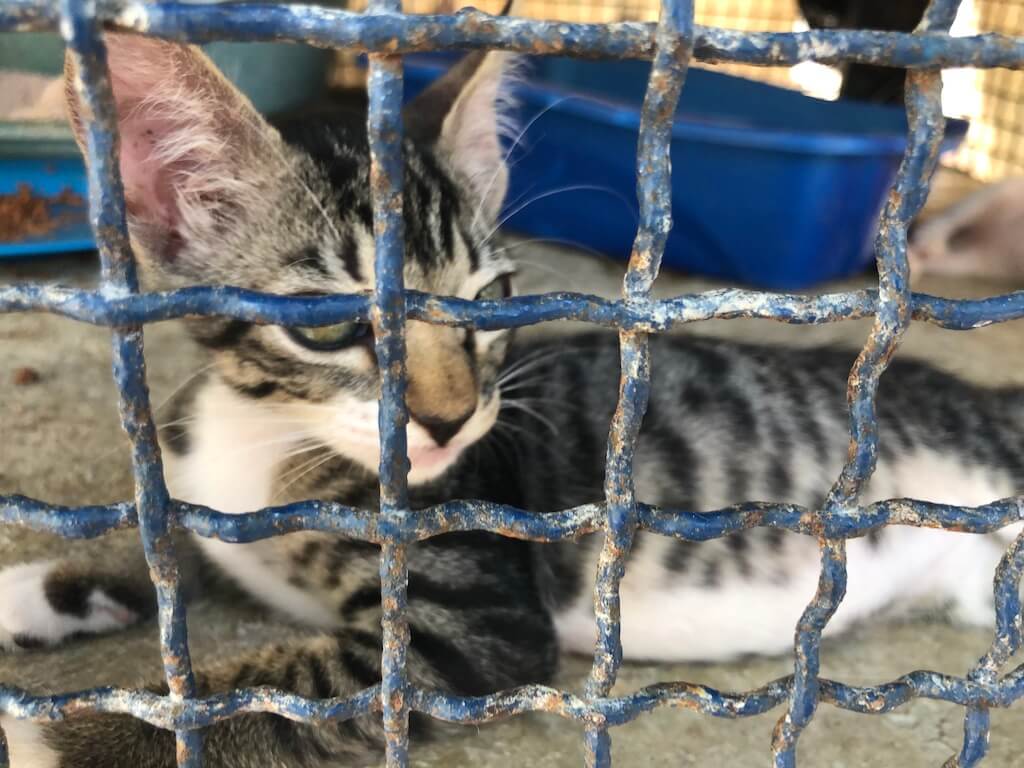
18. Explore Off the Beaten Path
In Mexico, there’s no shortage of resorts for you to lounge beachside and sip cocktails.
In fact, there’s entire cities that are largely driven by beach resorts, like Cabo San Lucas, Cancun, or Puerto Vallarta.
While rest and relaxation certainly have their place, a trip to Mexico should be so much more than that.
By staying exclusively at a resort, you’ll be seriously missing out on the vibrant and rich culture that makes Mexico so beautiful.
Take, for example, Puerto Vallarta, a city that’s largely driven by resort culture.
Walking around the more touristed districts of the city, you’ll see way more Senor Frogs and vendors aggressively hawking tours than mom and pop taco stands or stunning colonial architecture.
But if you look—and venture a little deeper—there’s magic to be found in and around this city.
Just an hour north of the city, you can find the charming towns of Sayulita and San Pancho, dripping with laidback surf vibes and boho charm.
If you’re looking for something a bit more quaint, take a quick water taxi to the tiny fishing village of Yelapa, known for its cascading waterfalls and car-less cobblestone streets.
Mexico is so much more than just its beach resorts; make sure you get a chance to experience it!
Jessica |Uprooted Traveler
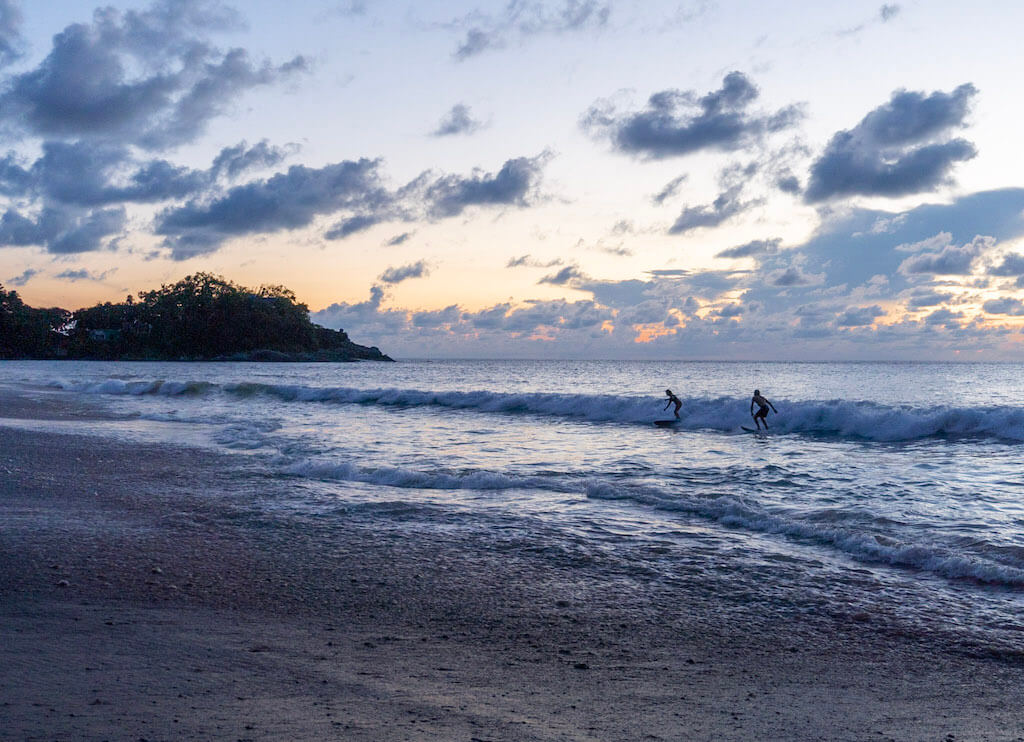
19. Avoid the ATMs.
If you’re traveling in Mexico, avoid taking cash out at a free-standing ATM.
I learned this the hard way when I was looking for a Playa del Carmen excursion.
I was shopping on the infamous 5th Avenue shopping district and assumed many of the small market stalls would need cash.
First mistake. Most places there took cards (reputable ones anyway).
However, I didn’t know this so, as I didn’t have cash on me, I looked for a reputable bank ATM.
I’d walked the full shopping street and didn’t find one so succumbed to the standalone ATMs which are everywhere.
I have a revolut cash card which is fantastic for travelling abroad as you can have free ATM withdrawals and good conversion rates.
However, the ATM initially flagged that it would cost $7.99 USD to make a withdrawal (of any amount).
I already thought this was extortion but went ahead with the transaction.
It was only when I withdrew my $300 that I realized that I had been charged an undisclosed percentage fee that totaled $32.
I was lucky, as when I looked online afterwards, many people have had their cards cloned and defrauded.
So, whatever you do, don’t use one of the ATMs, no matter how much you think you need the money.
Kerry |VeggTravel
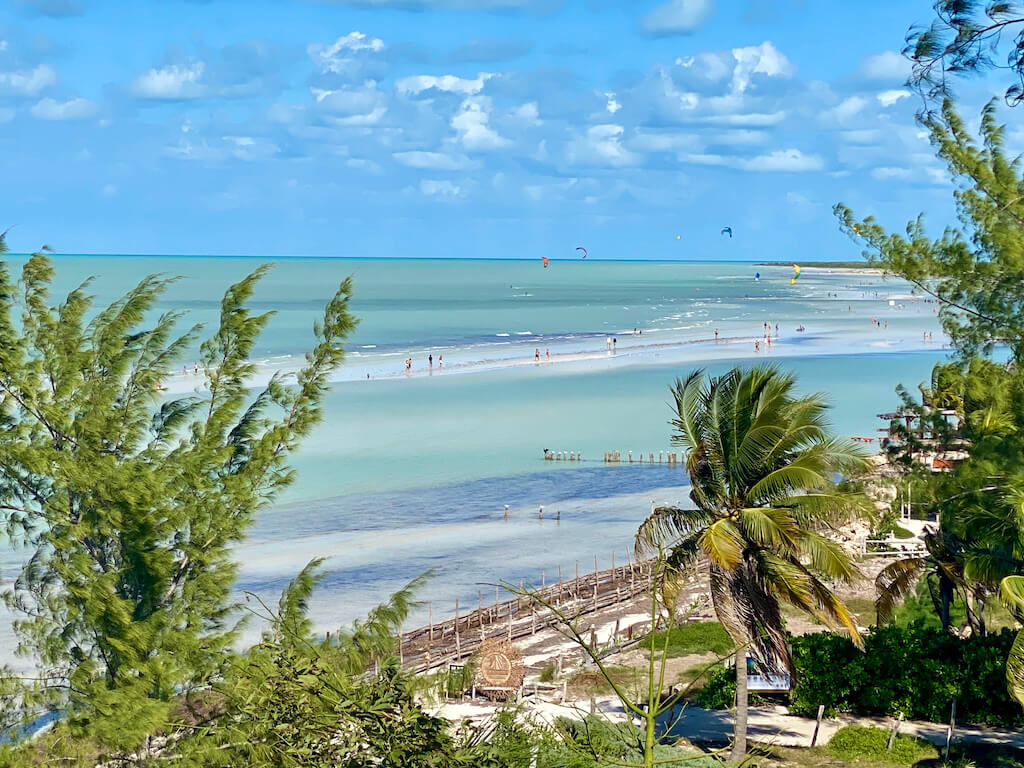
20. Rent a car.
Renting a car is one of the best ways to see Mexico as you will be able to travel at your own pace and stop at many hidden corners that most tourists tend to miss.
Renting a car is popular with tourists in places like Yucatán Peninsula, Baja California and Chiapas – some of the most popular regions of Mexico that boast diverse landscapes, plenty of culture and many hidden gems.
One of the best companies in Mexico for car rentals is City Car Rental that has services in many parts of the country.
For example, if you rent a car in Yucatán, you can visit some of the coolest Mayan ruins in the region that are not always serviced by public transportation or swim in hidden cenotes where only a few tourists go.
If you have never rented a car in Mexico, there are a few things to know before you go on a trip.
One of the main tips for renting a car in Mexico is to watch out for rates that are advertised as low as under $10 per day.
You should also watch out for any damages before renting a car and carefully check the car for any dings and scratches before leaving the rental car office.
Additionally, driving in Mexico comes with some caveats.
Although it’s not as dangerous as some people portray it to be, you should watch out for speed bumps, follow the posted speed limit, and limit your driving to day time, depending on the area.
By renting a car, you will be able to learn the country better and get a cultural experience that is often missing in popular touristy areas.
After all, Mexico is a huge country with many regional differences,and you could spend weeks and months on the road exploring one part after another.
Daria | The Discovery Nut
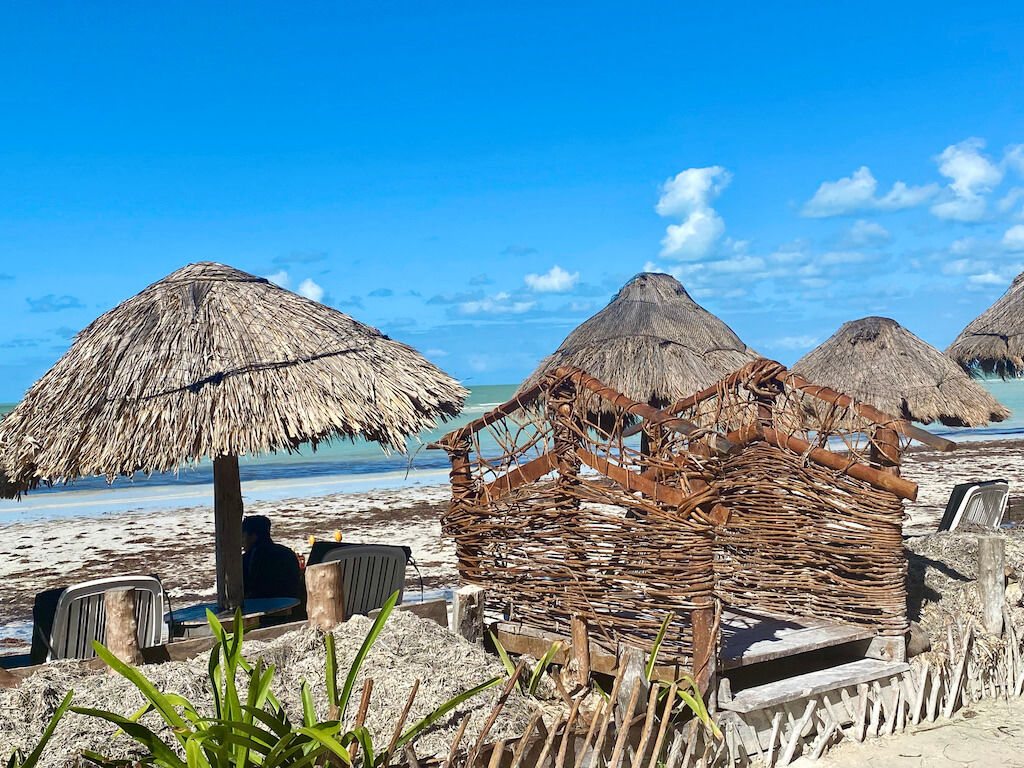
21. Don’t flush toilet paper.
Mexico’s sewage systems aren’t as robust as they are in other places and as a result, it’s not a good idea to flush toilet paper as it clogs up the septic tanks. Throw it in the provided wastebasket instead.
This custom causes heated debate among westerners who sometimes complain it’s not sanitary but…
the reality is, if you’re going to travel in places with antiquated infrastructure, you’ll need to follow the rules and customs just as you do when it comes to things like food, greetings, and safety.
But wait… “Even at my all-inclusive resort,” you ask? It’s true that some of the larger hotels have plumbing designed to cater to their western visitors.
Use this rule of thumb: If you see a sign asking you to toss toilet paper in the trash rather than the toilet, respect the rule. Otherwise, feel free to flush.
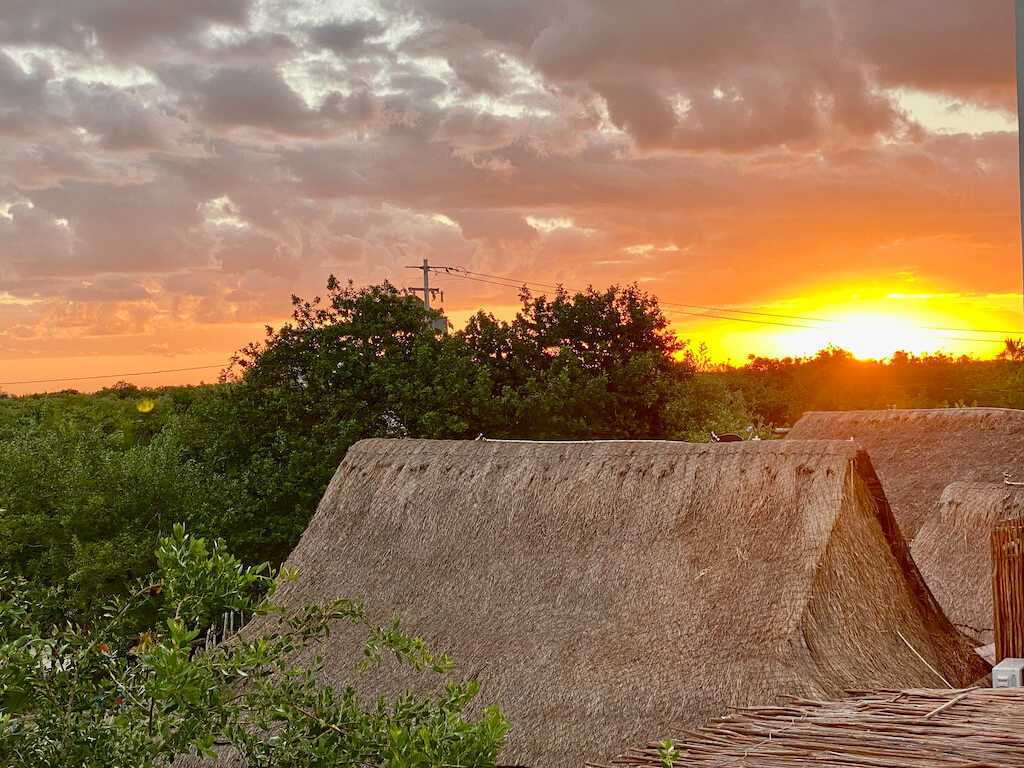
22. Keep your FMM card.
Before your plane lands in Mexico, you’ll be asked to complete a Forma Migratoria Múltiple (FMM), a tourist permit that enables travelers to visit. It allows you to stay in the country for up to 180 days.
It will be reviewed along with your passport when you go through Customs. But here’s the thing: You’ll also need to show your FMM when you leave the country.
In fact, you won’t be allowed to board your plane without it.
So keep it with your passport and plan ahead. Otherwise, you’re likely to be sent back to Immigration to sort it out while your plane takes off without you!
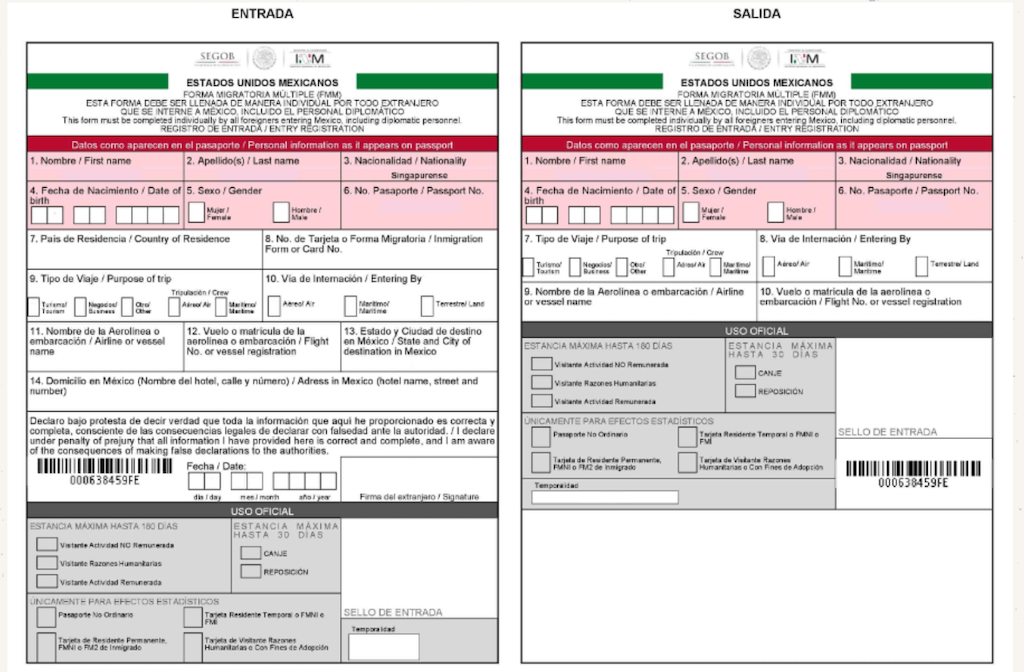
23. Protect your skin.
Tropical storms blow through coastal areas like the Yucátan regularly…leaving standing water in muddy potholes in plenty of pueblos. And that means mosquitos!
In some areas, like islands in the Yucátan, you’ll see clouds of them at sunset.
Nobody likes to be scratching mosquito bites all day so be sure to plan ahead and bring a mosquito repellent.
While I don’t love repellents with DEET, my experiment with a natural product that worked great in French Polynesia failed miserably recently in the Yucátan so I sucked it up and bought this one on Amazon which did the job.
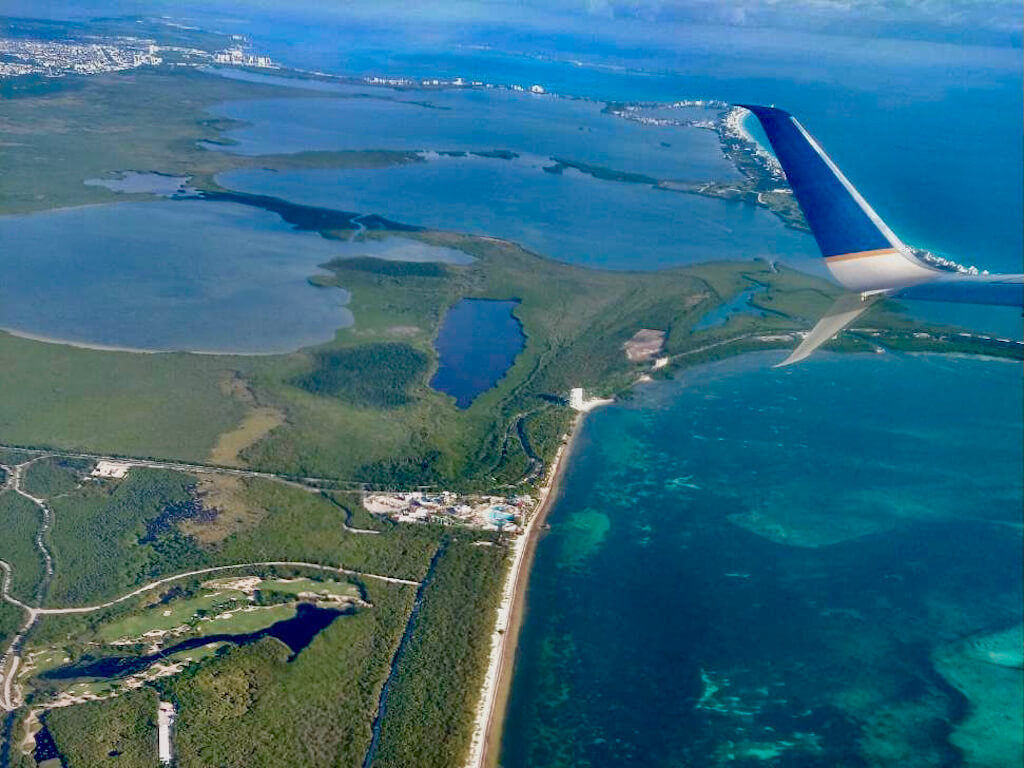
24. Get a VPN.
A VPN—short for “virtual private network” is the best way to ensure you have a secure Internet connection when traveling.
Because it blocks your ISP, it makes it much more difficult for third parties to track your activities online and steal your data.
In fact, my local credit union wouldn’t allow me to transfer money while I was in Europe because my bank is in the U.S. but with a VPN, I could set my location to San Diego and have no problem.
In the same way, it’s handy for accessing local TV shows from home you can’t typically watch from other countries.
Or tune into European releases on Netflix when you are home.
You’ll simply set your location to the country where viewers would normally have access.
There are dozens of VPN services. Ratings and prices change frequently. Learn more about VPNS here.
Like this post? Pin it for later!
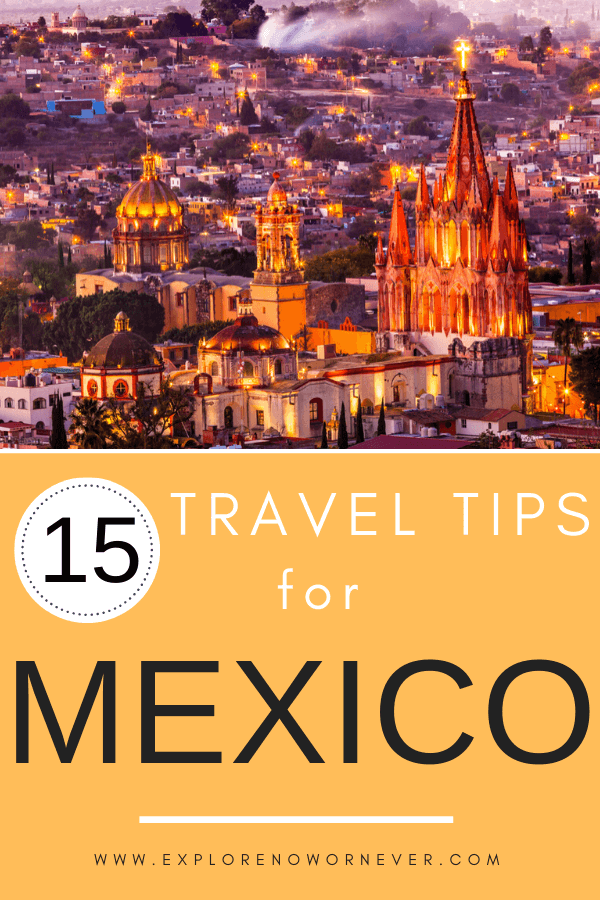
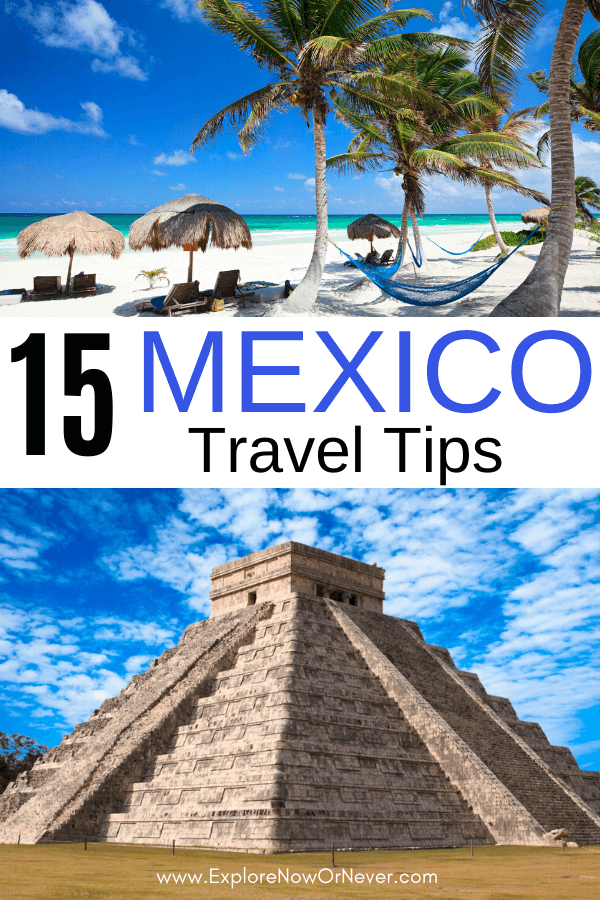
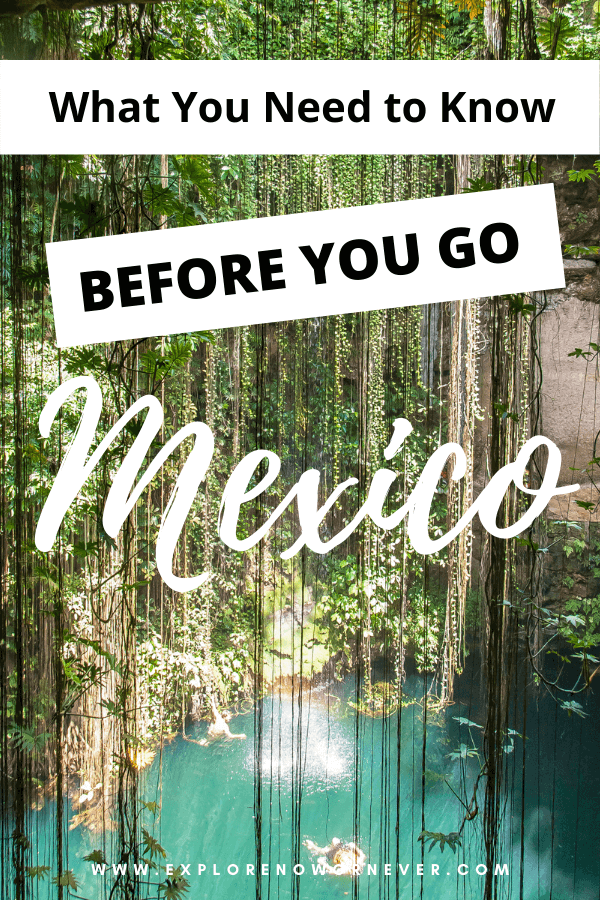
Excellent article, Chris. I would almost feel comfortable traveling there except the memories of all the stupid mistakes I made when I was younger still populate my brain! I would add that in purchasing travel insurance, make sure you have evacuation insurance in case you have a serious illness as many resorts are not equipped to deal with them and the hospitals are not up to our standards. When I was a practicing nurse ten years ago, the cost of a medivac plane was about $75,000. Also, make sure that the insurance covers pre-existing conditions. Thanks for the great info!
Thanks Lisa! That’s why I recommended World Nomads. It’s very comprehensive and does cover preexisting conditions (although important to read the fine print). I think most of Mexico is wonderful and safe, although it’s important to know where the cartels operate as certain areas are higher risk as a result. Generally though, I believe tourists are safe if they are not looking for trouble late at night in sketchy areas.